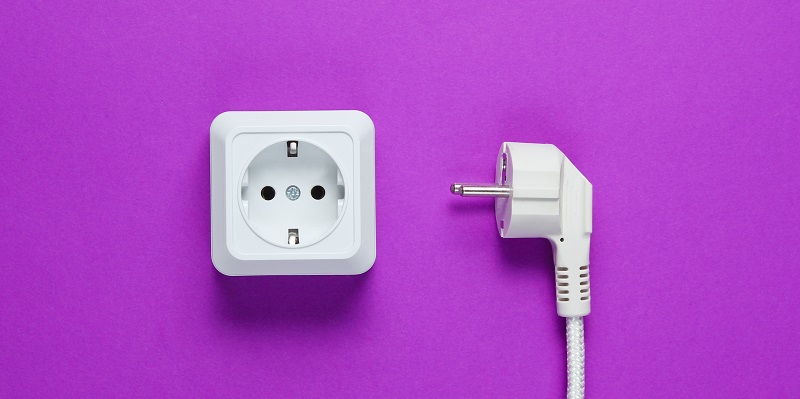The accelerated adoption of artificial intelligence (AI) has taken the tech world by storm. However, recent research is sounding the alarm on the potential environmental consequences of our AI-hungry data centers. In the coming years, the exponential growth of AI applications could lead to electricity consumption on par with entire countries such as the Netherlands or Sweden. This article delves into the projected surge in AI-related electricity consumption, the comparison to country-level usage, the methodology used to derive these figures, concerns regarding the application phase, and the urgent call for industry mindfulness and environmental sustainability.
Projected Increase in AI-Related Electricity Consumption
Supplemented by meticulous research, the forecasted statistics on AI-related electricity consumption are staggering. By 2027, annual AI-related electricity consumption worldwide could increase by estimates ranging from 85.4 to 134.0 terawatt-hours (TWh). These numbers signify a significant jump, standing at around half a percent of global electricity consumption. As AI rapidly permeates various sectors, this projected surge poses a serious threat to the already burgeoning energy demands of data centers worldwide.
Comparison to Country-Level Electricity Consumption
To provide a tangible perspective on the scale of this impending energy consumption, let’s examine the substantial figure of around 85.4 to 134.0 TWh. By 2027, this level of electricity usage could be on par with countries such as the Netherlands, Argentina, and Sweden, which consume electricity at a similar rate. It is crucial to recognize that AI’s power consumption is on track to rival that of entire nations, necessitating immediate attention and thoughtful mitigation strategies.
Methodology and Data Used
These eye-opening statistics have been meticulously derived using the annual production of Nvidia DGX chips. These chips are employed in approximately 95% of prominent AI applications, making them an accurate benchmark for estimating energy consumption. The research, conducted by Ph.D. candidate Alex de Vries, represents a comprehensive analysis of the electricity demands associated with AI usage. By considering the annual output of Nvidia DGX chips, de Vries paints a vivid picture of the impending energy crisis within our data centers.
Expectation of Chip Supply Bottleneck Resolution
Currently, the supply of Nvidia DGX chips faces certain limitations and bottlenecks. However, the industry anticipates these constraints to be resolved soon. Once the supply chain issues are overcome, an influx of new chips into the market is expected. This influx of chips could potentially amplify data center energy consumption by up to an astonishing 50%. Consequently, the resolution of chip supply bottlenecks must be closely monitored and managed to ensure it does not compound the energy concerns associated with AI.
Consumption Estimates Based on Chip Production
Taking into account the annual production of these Nvidia DGX systems, the projected energy consumption is substantial. Each year’s supply would require approximately 85 to 134 TWh of electricity. This is a tremendous amount, not only in terms of its absolute magnitude, but also in relation to the already burgeoning global energy demands.
Comparison to Other Countries
By 2027, the electricity consumption related to AI could vividly resemble the energy consumption levels of countries like the Netherlands, Argentina, and Sweden. This reveals the astonishing scale and impact of AI on our energy infrastructure. Unless proactive measures are taken, this escalating energy demand could potentially overwhelm existing infrastructure and further exacerbate environmental concerns.
Concerns about Application or “Inference” Phase Energy Consumption
While the energy consumption during the training phase of AI systems has been a focal point of discussion, it is equally crucial to acknowledge the energy consumption during the application or inference phase. In systems like Google Search, the energy expended during the low-power inference phase can be as substantial as that used during training. This highlights the need for a comprehensive understanding of energy usage in AI systems to effectively address and mitigate the environmental impact holistically.
Call for Industry and Environmental Sustainability
In light of these alarming findings, the onus falls on the AI industry to cultivate sustainable practices and solutions that align with the needs of end-users. Environmental sustainability must be integrated into the core values and decision-making processes of AI development and deployment. Furthermore, the industry must invest in research and development to optimize energy efficiency, hardware advancements, and innovative cooling technologies within data centers to minimize the ecological footprint of AI technology.
As the integration of artificial intelligence into various sectors surges forward, so does the energy consumed by data centers. The predicted increase in AI-related electricity consumption is significant, reaching levels that will soon rival those of entire countries. Urgent attention is required to rein in this impending energy crisis. By leveraging innovative solutions, collaborative efforts, and a strong commitment to environmental sustainability, we can harness the immense potential of AI without sacrificing the delicate balance of our planet’s resources.

